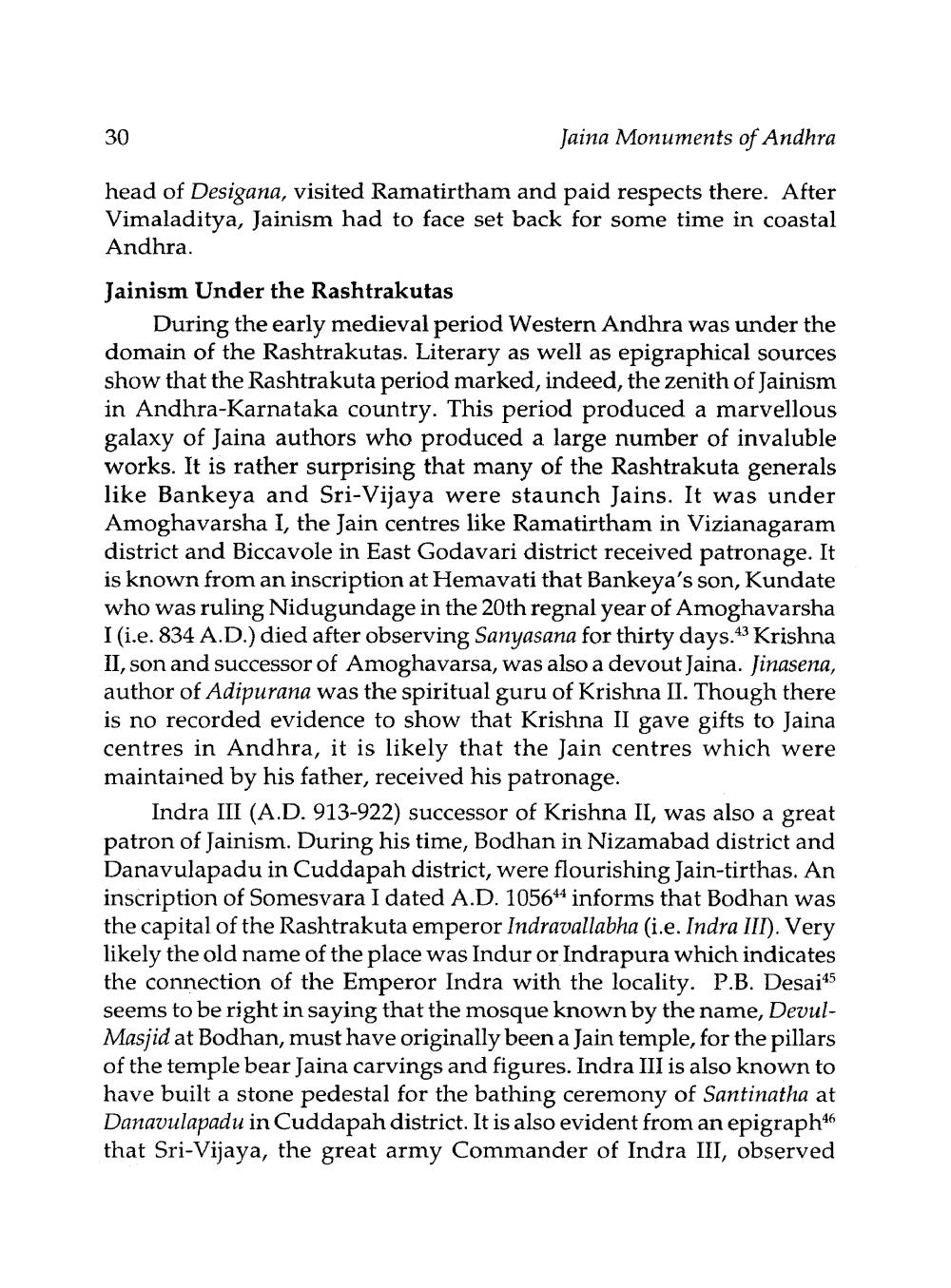________________
30
Jaina Monuments of Andhra
head of Desigana, visited Ramatirtham and paid respects there. After Vimaladitya, Jainism had to face set back for some time in coastal Andhra.
Jainism Under the Rashtrakutas
During the early medieval period Western Andhra was under the domain of the Rashtrakutas. Literary as well as epigraphical sources show that the Rashtrakuta period marked, indeed, the zenith of Jainism in Andhra-Karnataka country. This period produced a marvellous galaxy of Jaina authors who produced a large number of invaluble works. It is rather surprising that many of the Rashtrakuta generals like Bankeya and Sri-Vijaya were staunch Jains. It was under Amoghavarsha I, the Jain centres like Ramatirtham in Vizianagaram district and Biccavole in East Godavari district received patronage. It is known from an inscription at Hemavati that Bankeya's son, Kundate who was ruling Nidugundage in the 20th regnal year of Amoghavarsha I (i.e. 834 A.D.) died after observing Sanyasana for thirty days.43 Krishna II, son and successor of Amoghavarsa, was also a devout Jaina. Jinasena, author of Adipurana was the spiritual guru of Krishna II. Though there is no recorded evidence to show that Krishna II gave gifts to Jaina centres in Andhra, it is likely that the Jain centres which were maintained by his father, received his patronage.
Indra III (A.D. 913-922) successor of Krishna II, was also a great patron of Jainism. During his time, Bodhan in Nizamabad district and Danavulapadu in Cuddapah district, were flourishing Jain-tirthas. An inscription of Somesvara I dated A.D. 105644 informs that Bodhan was the capital of the Rashtrakuta emperor Indravallabha (i.e. Indra III). Very likely the old name of the place was Indur or Indrapura which indicates the connection of the Emperor Indra with the locality. P.B. Desai45 seems to be right in saying that the mosque known by the name, DevulMasjid at Bodhan, must have originally been a Jain temple, for the pillars of the temple bear Jaina carvings and figures. Indra III is also known to have built a stone pedestal for the bathing ceremony of Santinatha at Danavulapadu in Cuddapah district. It is also evident from an epigraph4 that Sri-Vijaya, the great army Commander of Indra III, observed




